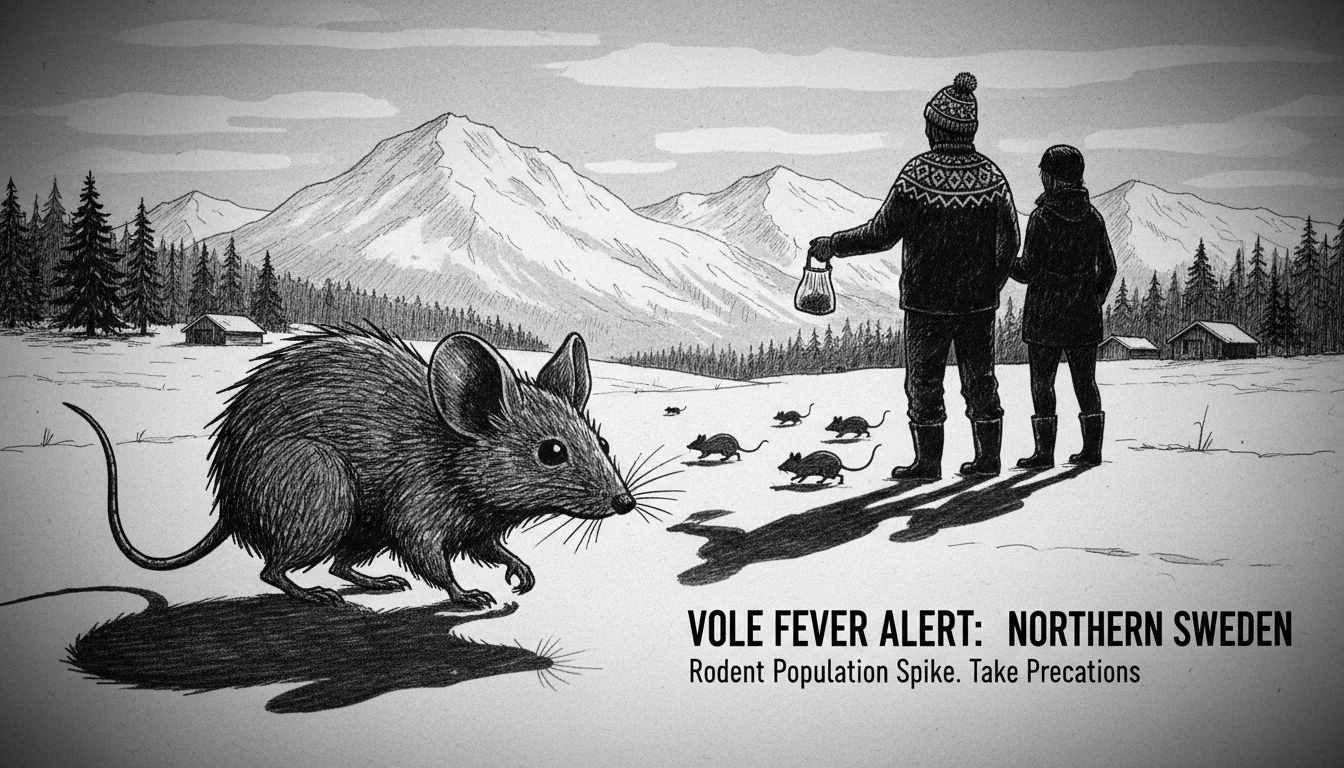Northern Sweden faces a health alert this autumn as vole populations reach concerning levels. Researchers at the Swedish University of Agricultural Sciences confirm what many locals already noticed through wildlife observation apps. The abundance of forest voles means increased risk of vole fever, particularly for residents in Sweden's four northernmost counties.
Frauke Ecke, a landscape ecology researcher, explains the situation. 'The increase happened this year, and there's a delay of several weeks before people get sick. We're issuing warnings now to encourage caution and enable healthcare preparedness,' she said in a statement.
This marks Sweden's first major vole fever threat in seventeen years. The last significant outbreak infected over 2,000 people, with nearly 90 percent of cases occurring in northern regions. A more moderate outbreak occurred during the winter of 2021-2022, also following a season of abundant rodents.
'Current vole numbers in the forests are approximately at the same level as 2007 when we had the major outbreak,' Ecke noted. 'We've also had an autumn with substantial rainfall, which also plays a role.'
Vole fever is a viral disease spread through forest voles. People typically contract it by inhaling dust from areas where voles have been active. The disease doesn't transmit between humans, and most people recover within a few weeks.
For international readers unfamiliar with Swedish environmental patterns, this situation reflects the country's close relationship with its natural world. Sweden's vast northern landscapes create unique ecological dynamics where animal population cycles directly impact public health. The current vole surge connects to broader environmental changes affecting Nordic regions.
Northern Swedish communities from Norrbotten to Västerbotten should take precautions when spending time outdoors. This includes avoiding areas with visible rodent activity and being mindful when cleaning sheds or seasonal homes. The timing coincides with mushroom foraging season and outdoor activities that bring people into forested areas.
Healthcare providers across northern Sweden are preparing for potential cases while monitoring the situation closely. The combination of high rodent populations and wet weather creates ideal conditions for disease transmission. Most residents will continue their normal lives with added awareness, embodying the Swedish approach of 'lagom' – balanced preparedness without overreaction.
The situation demonstrates how Sweden's public health system proactively addresses environmental health threats. Rather than waiting for cases to emerge, officials issue early warnings based on ecological monitoring. This preventive approach reflects Sweden's commitment to both public health and environmental awareness.

